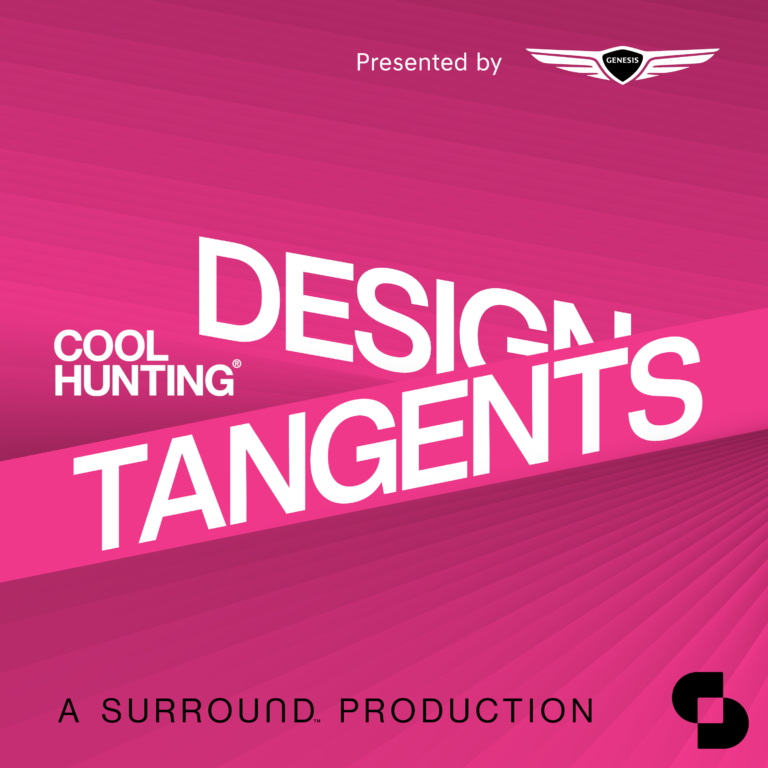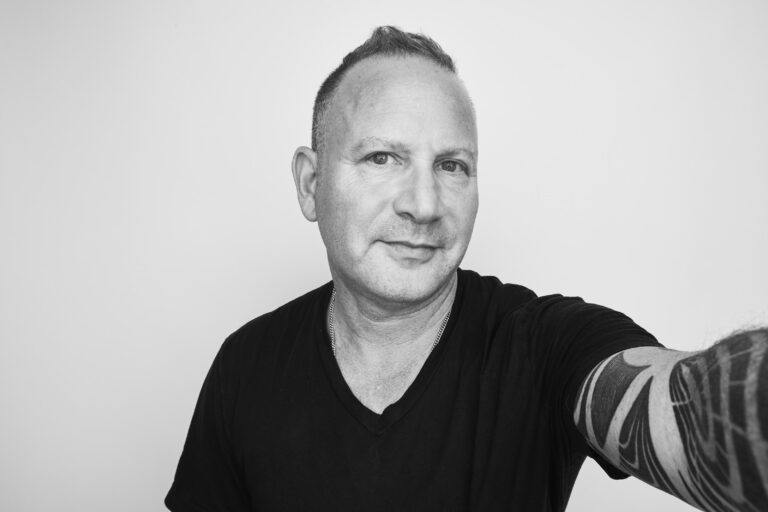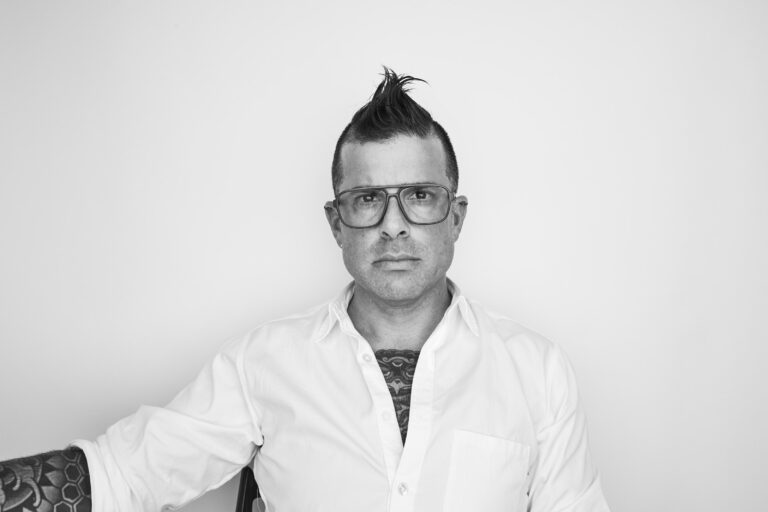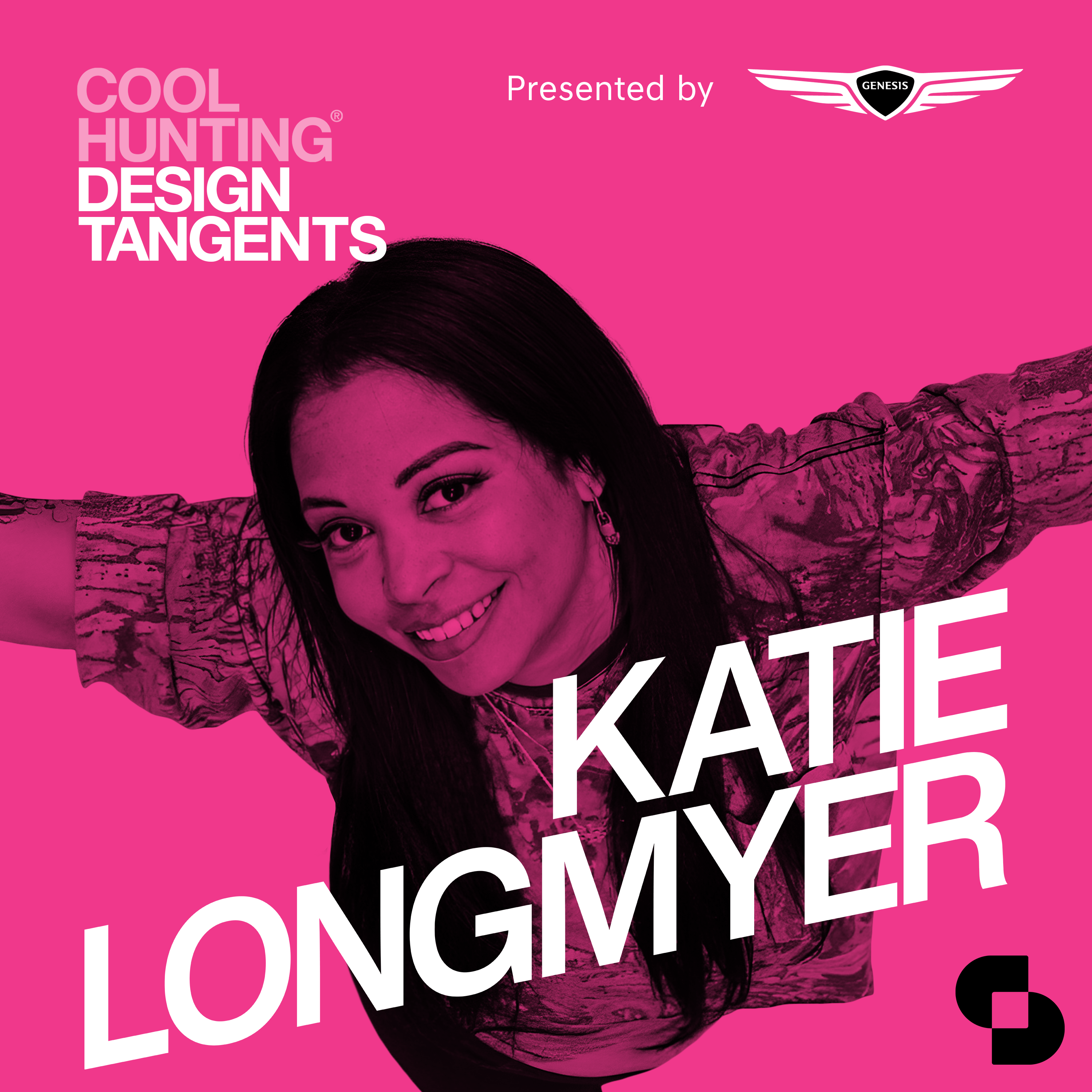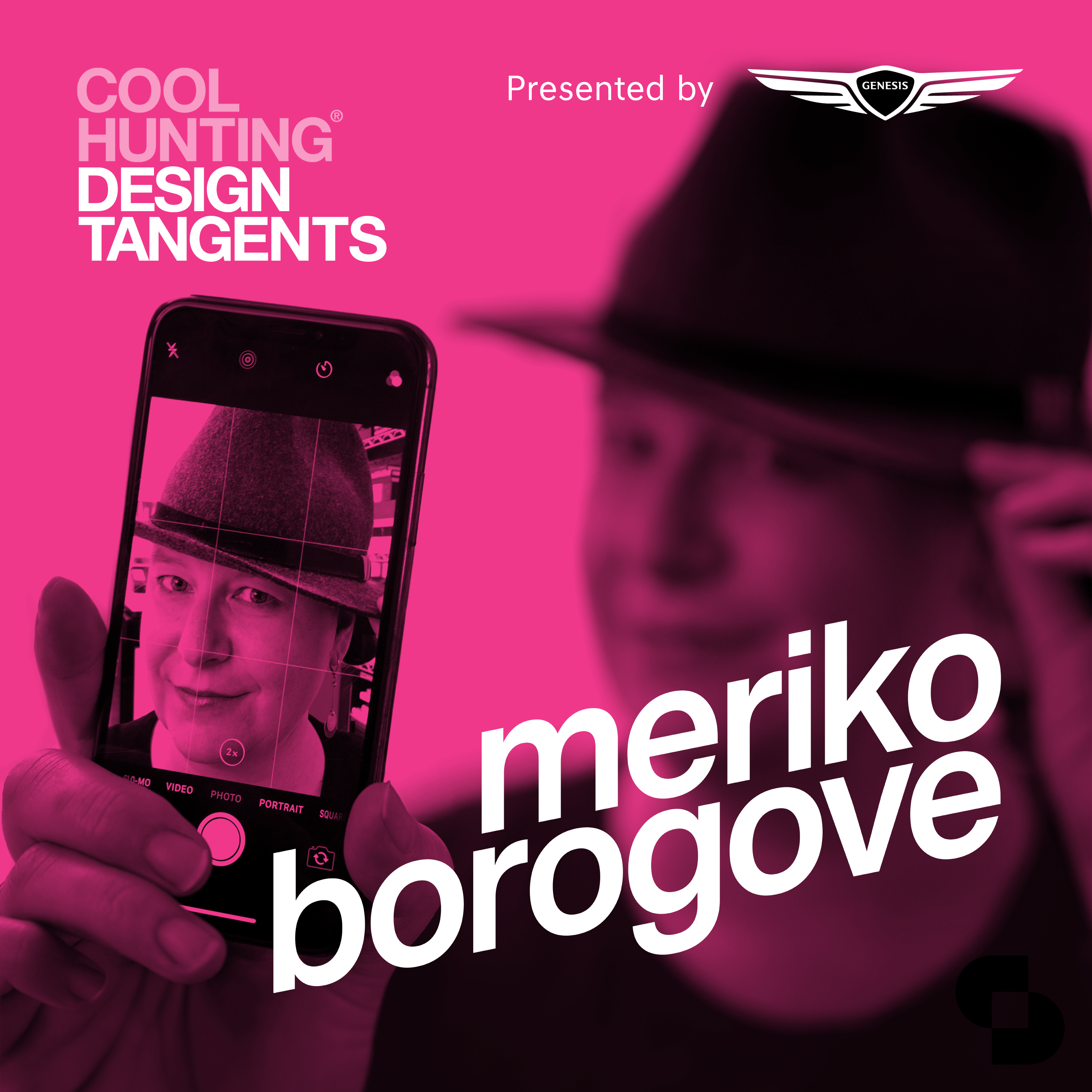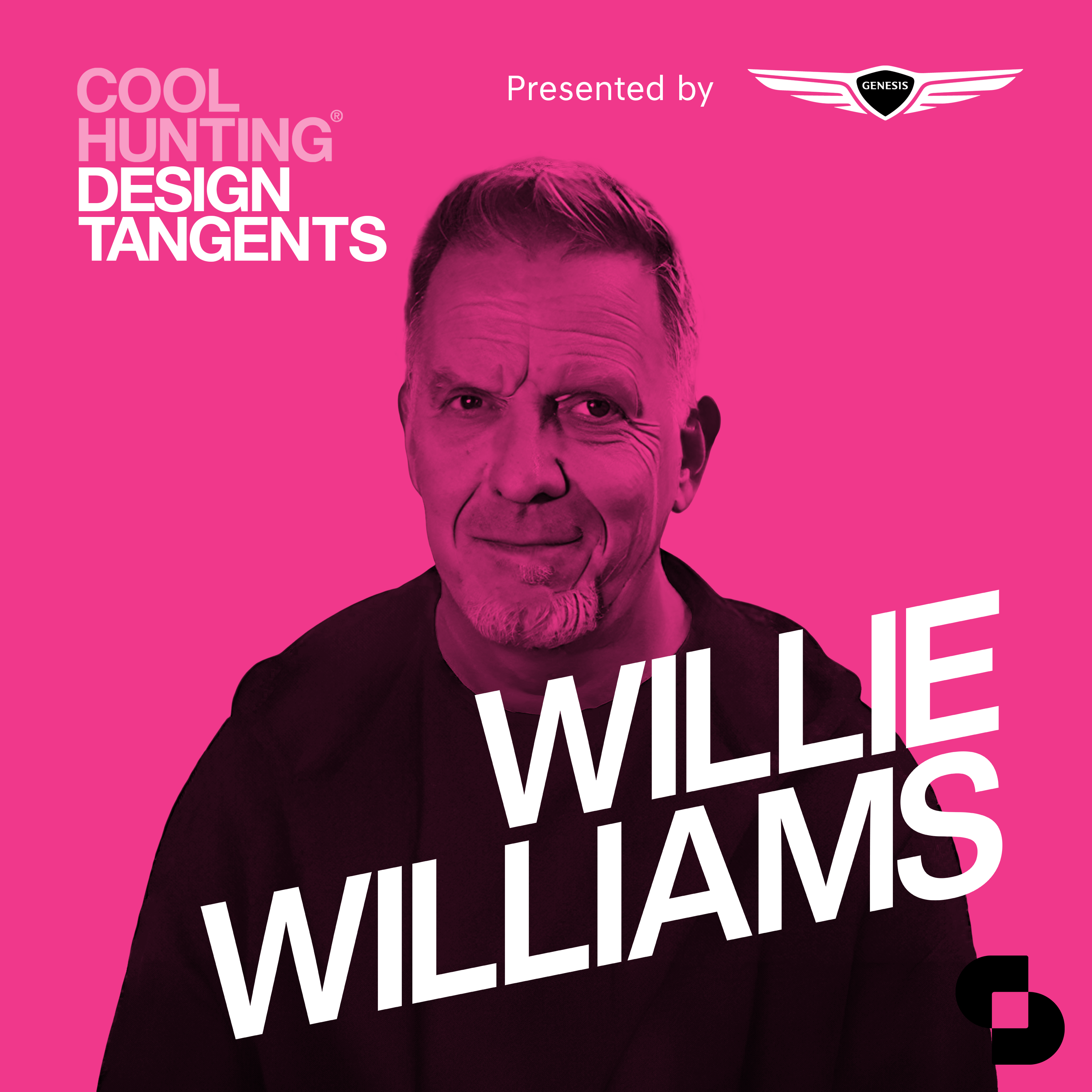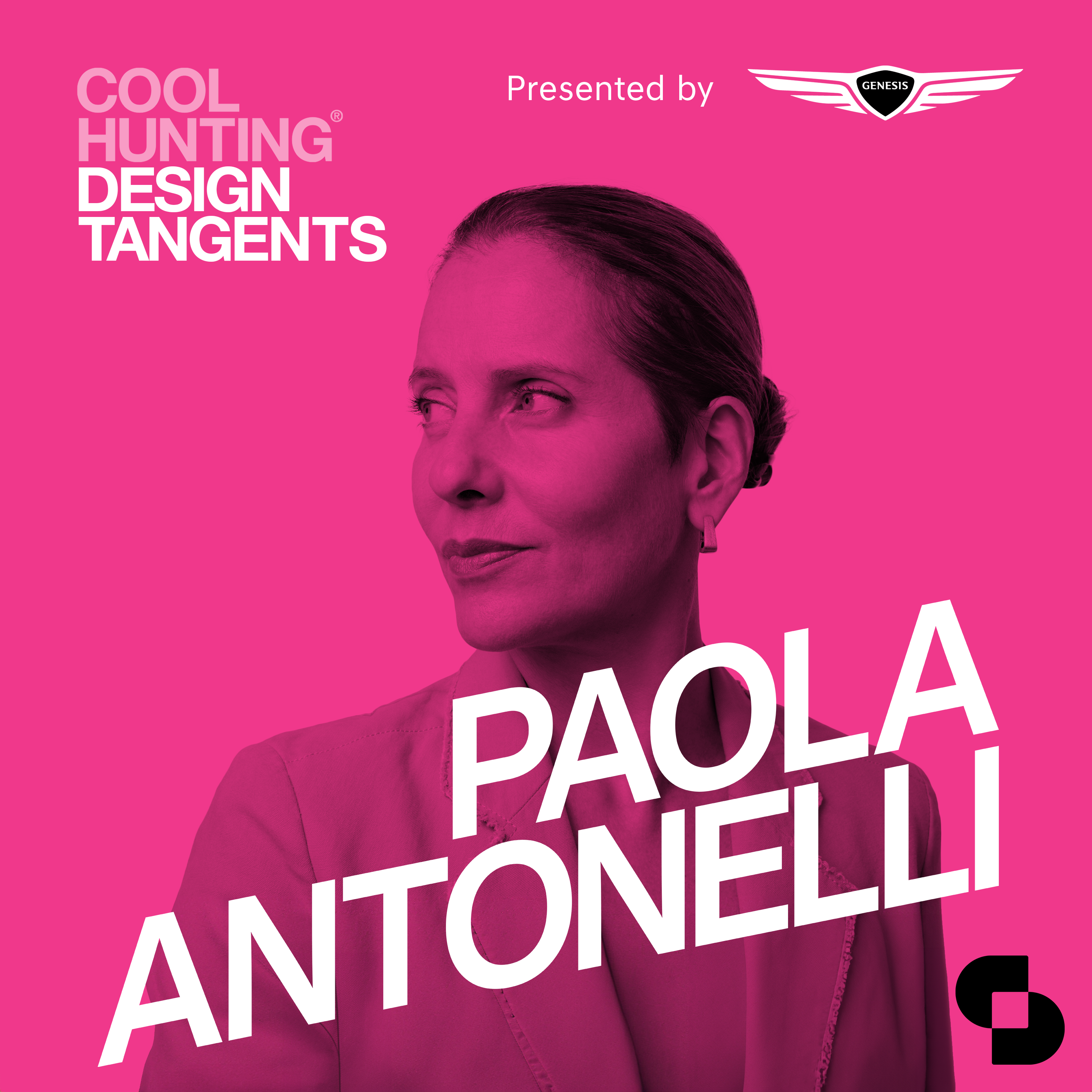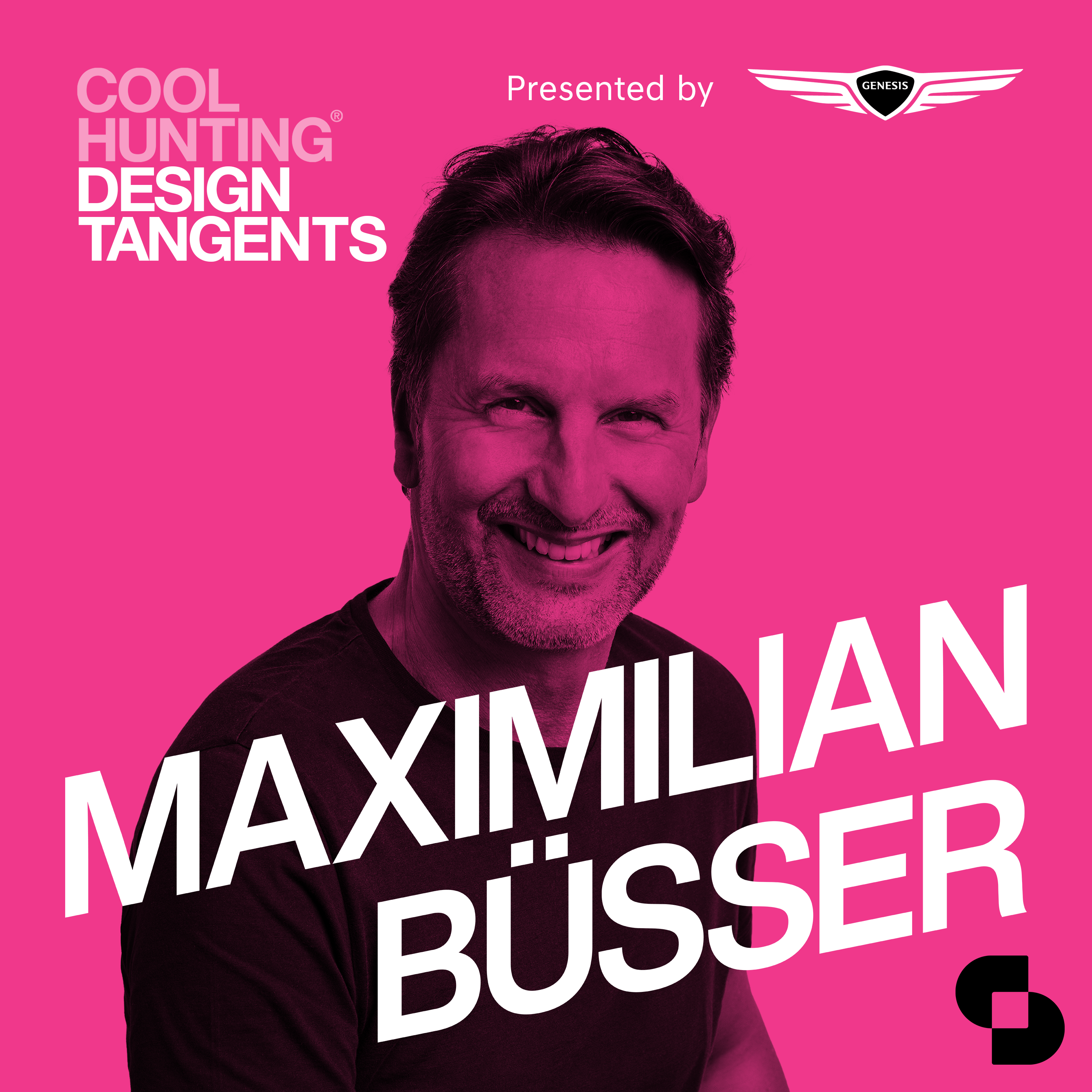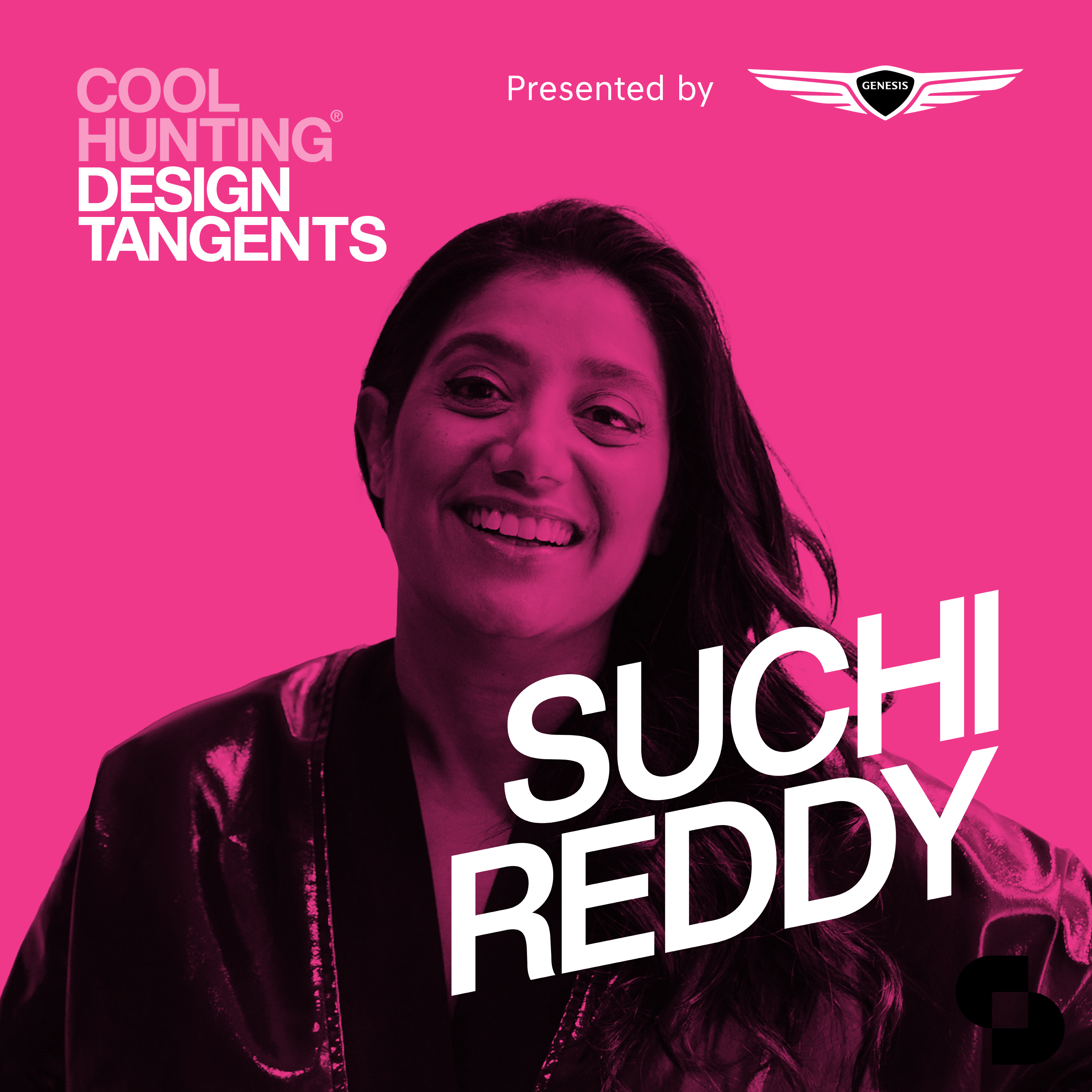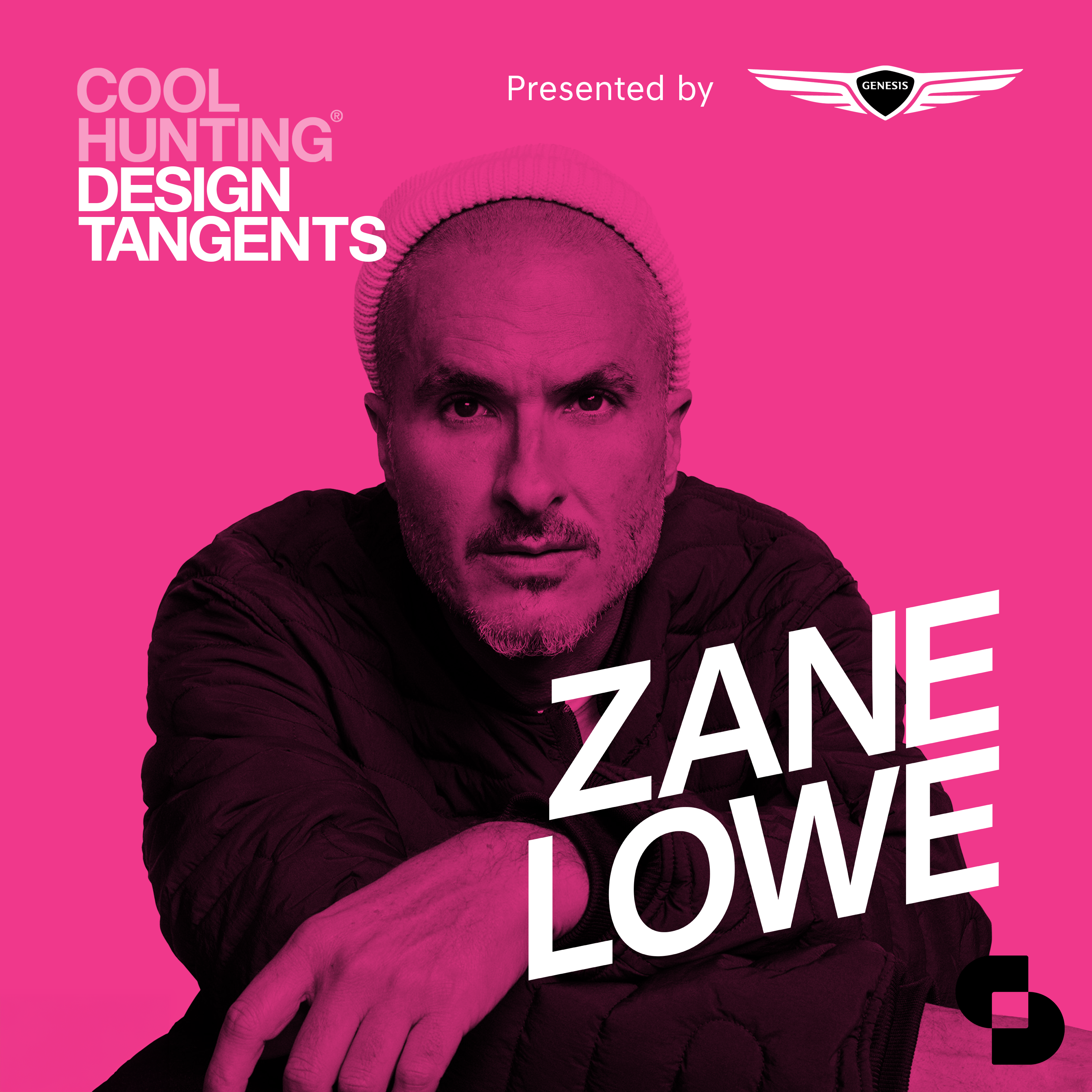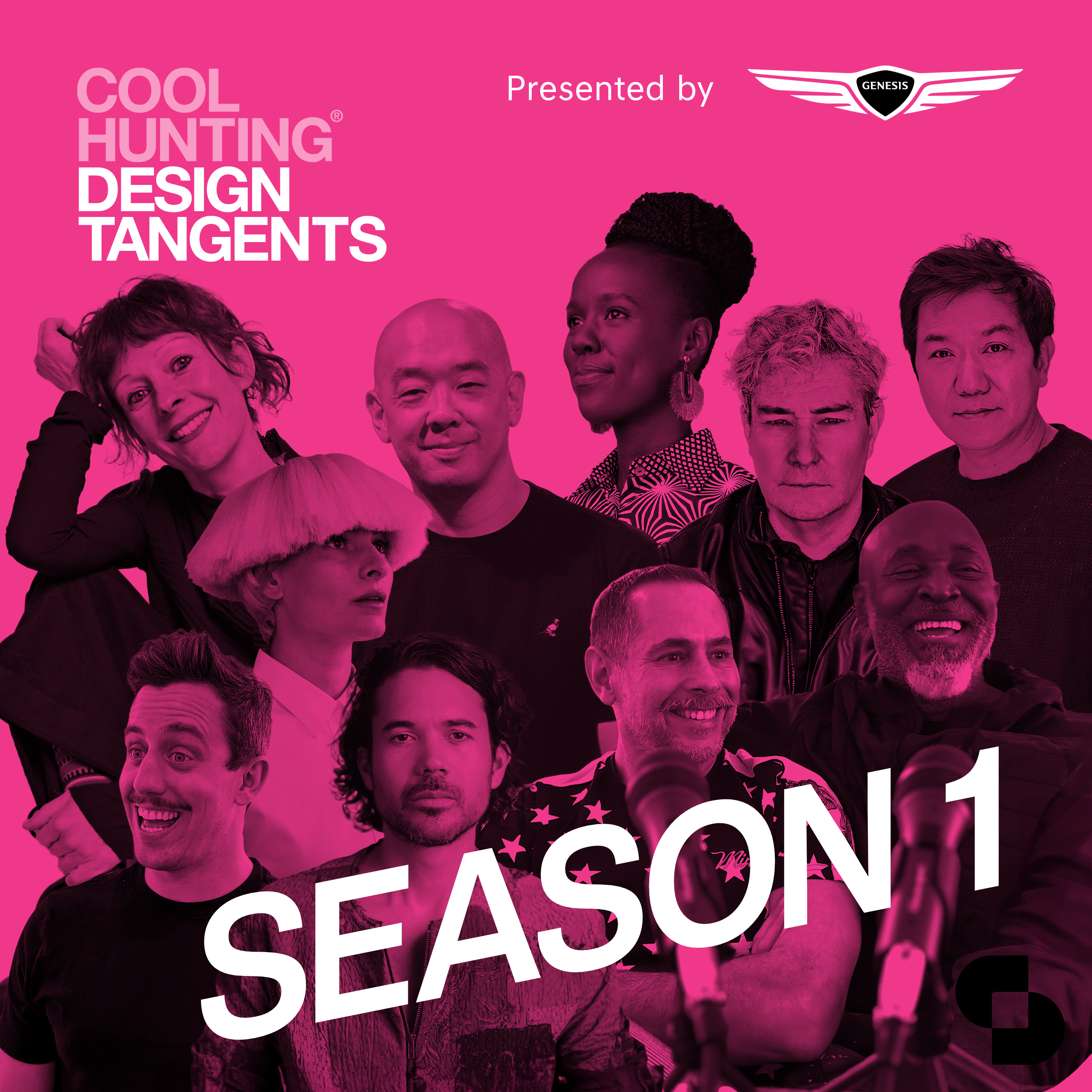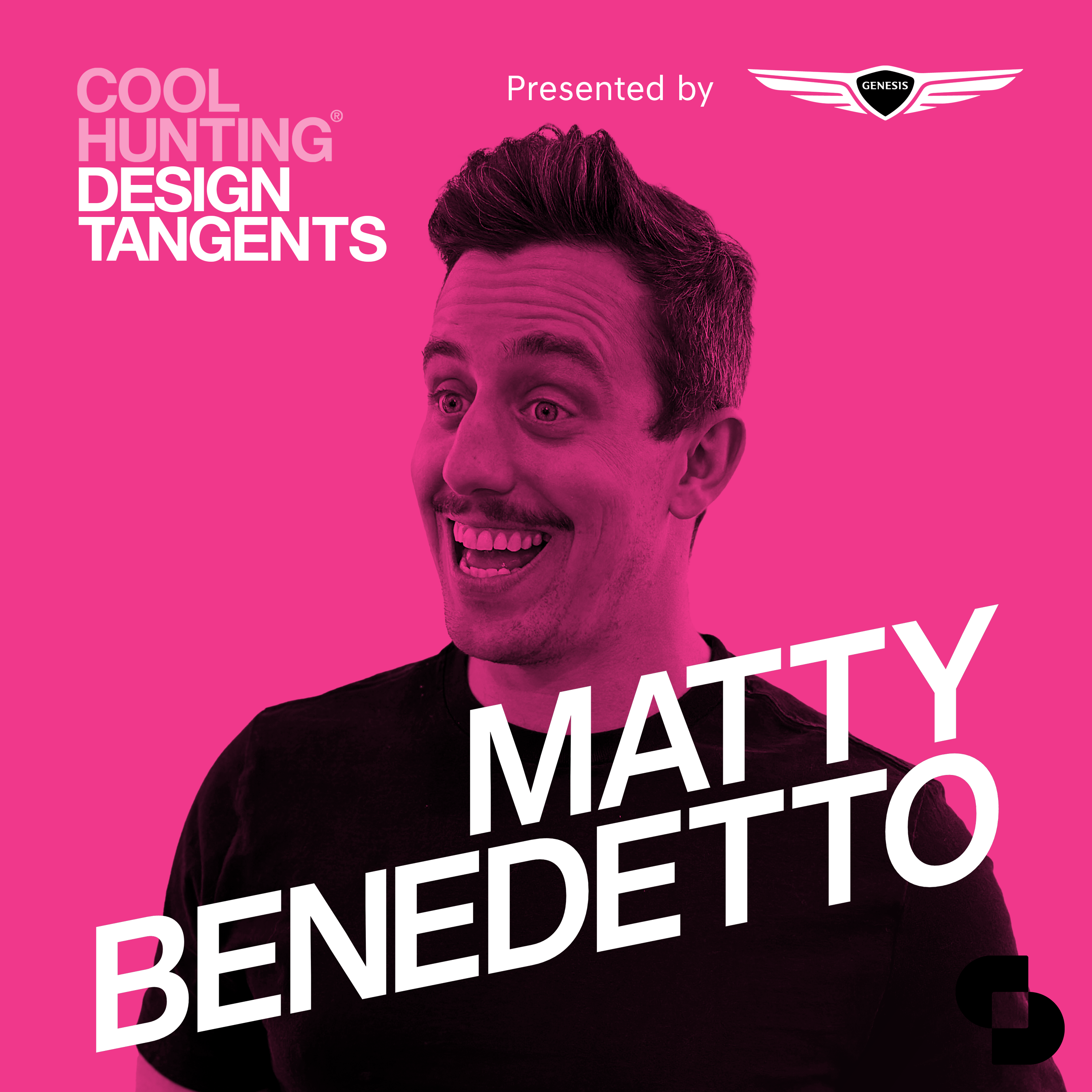Conversations about data can be pretty dry, but not when you’re talking to Giorgia Lupi—an information designer and partner at world renowned design firm Pentagram. In this episode we get to hear her passion for crafting data into humane, engaging and exciting visualizations and the opportunities for data to enhance creativity as well. She even uses data to track things in her personal life—like dating! Giorgia flips the script a couple times asking Josh and Evan a few questions and the resulting conversation offers a bit of background about COOL HUNTING.
pentagram.com/about/giorgia-lupi
coolhunting.com/tag/giorgia-lupi/
Discover more shows from SURROUND at surroundpodcasts.com. This episode of Design Tangents was produced and edited by SANDOW Design Group. Special thanks to the podcast production team: Rob Schulte, Hannah Viti, Wize Grazette, and Samantha Sager.
Transcripts, show notes, and links for each episode of Design Tangents can be found at surroundpodcasts.com/design-tangents
Although the transcription is largely accurate, in some cases it is incomplete or inaccurate due to inaudible passages or transcription errors.
[00:00:00] Giorgia Lupi: My name is Giorgia Lupi. I am a designer who works with data. I am a partner at Pentagram. Um, and I’ve joined a little over three years ago, and I’m focused on all kind of information design project, and data visualizations at Pentagram.
[00:00:24] Josh Rubin: I’m Josh Rubin.
[00:00:26] Evan Orensten: I’m Evan Orensten and we’re the founders of COOL HUNTING. We create original content across many categories, and our work is rooted in creativity and innovation.
[00:00:35] Josh Rubin: Design has been a through line for so much of what we’ve covered on COOL HUNTING over the last 20 years. But design isn’t just about graphics or architecture or products or interiors. Design to us.
Design is an analysis, it’s a process. It’s a journey. It’s a way of thinking and feeling, and it applies to pretty much everything as far as we’re concerned.
[00:00:56] Evan Orensten: We created Design Tangents to share the kinds of conversations we have with creators because that through line that Josh just talked about isn’t always linear or obvious.
Often we take twists and turns and we go off the rails, and that’s where we discover the really good things. We get to talk to some incredible people, and one thing that we’ve found that’s very consistent among them, is that they’re fueled by this burning curiosity.
[00:01:25] Josh Rubin: Today we’re talking to Giorgia Lupi, and I’m really excited about this conversation because we’ve known Giorgia for a long time and followed her work for even longer and have always been fans of the fact that she brings such a beautiful human touch to data
[00:01:41] Evan Orensten: Giorgia Lupi runs a fairly new practice at Pentagram Design Group.
Where she translates data into stories. One of the things I love about Pentagram is that it’s the old school for a design studio with multiple partners running different businesses that collaborate together.
[00:01:57] Josh Rubin: It was so fun to sit down with Giorgia and hear about how she uses data to craft story and also hear about the arc of her career from how she started to what she’s up to today at Pentagram.
Sprinkled in with a few fun anecdotes, including her dating life.
[00:02:18] Evan Orensten: Hi, Giorgia.
[00:02:18] Giorgia Lupi: Hi Evan. And hi Josh.
[00:02:20] Josh Rubin: Hi.
[00:02:21] Evan Orensten: How are you?
[00:02:21] Giorgia Lupi: Doing well. I’m excited to be here.
[00:02:24] Evan Orensten: It’s a beautiful sunny day. Uh, Josh and I are here in Beacon. Uh, it looks like you’re maybe in New York.
[00:02:29] Giorgia Lupi: I’m in New York City. I’m in Manhattan in my office right now.
[00:02:33] Evan Orensten: We are so grateful that you’re taking the time to talk to us today.
We’ve known each other for a long time. We’re excited to talk a little bit about your multiple creative inputs that help you output so many different things. This is like the podcast that wrote itself
[00:02:52] Josh Rubin: Giorgia, you’re, you know, you, you, you spend a lot of time thinking about data that can be received in a more, I don’t know, to me in a more emotional and a more heartfelt way.
How do you describe what you do as a designer or approach to design?
[00:03:09] Giorgia Lupi: I define myself as a designer whose favorite material to work with is data. I do have a personal obsession with data that I’ve had for a long time, and by data I actually mean a way to analyze the world. A way to see our reality ourselves, our relationships, um, through this one subject at a time kind of analysis.
So almost like a filter that can help us see things around us better. Virtually every single company, every potential client that I might have, you know, use uses data to make decision to monitor strategies. And I really think that designing with data is just another way to design. For me, data are, like for other designers, are images and typography and words.
So the storytelling aspect about data is really what I’m obsessed about.
[00:04:00] Evan Orensten: To so many creative people. Data is so threatening, and yet you, you make data fun, which is, I think, a pretty heroic achievement. You make data really accessible and, and pique people’s curiosity through the ways in which you express data.
[00:04:18] Giorgia Lupi: Well, thank you. I, I hope so. I think for me, um, the most important thing is to make people relate to any topic that, you know, I’m talking about through data. I think I’m pretty lucky as a designer cause data for me is also a way to access content to, to access story and hopefully again, to relay those stories through visual expressions to readers or visitors of an exhibition or users for a lack of a better word, of whatever kind of like digital experience.
Um, and the power that the di the design has to make things friendly and engaging, I think is extraordinary. And, um, the power that design has also to make people understand data relate to data and not be scared of data, I think is really incredible. But fundamentally, I think even, um, we probably have to become a little more data literate as a society.
I kind of like this idea of learning to speak data and speaking data is something that, you know, we should all know like we know English as my second language, for example, or we know how to speak the language of a computer pretty much.
[00:05:21] Evan Orensten: Talking about humanizing data in a way that’s accessible to more people.
[00:05:27] Giorgia Lupi: Yeah, I really like to start from the basics. Primarily data, all kind of data is human made because even if it comes from a sensor, while a human being designed the sensor and decided what to collect and what to leave out, because if we go to the basics, data is nothing else, than an abstraction of reality that we humans created, because we couldn’t store life on a hard drive. And so it’s really a way for us to record facts, activities, transactions, and when we go to the more qualitative aspects of it, even stories. We all also as human beings want to measure ourself, to count things, to keep track of things, to see when we fit into like a big collective group.
I mean, that is collecting data to me. Of course, then what technology can do is amplifying and giving us so many. Layers that we can collect about data, but I think it really, um, it matters to remind people the data is primarily human made.
[00:06:27] Evan Orensten: Can you explain data humanism?
Data humanism to me is my way to always reconnect numbers to what they stand for, which are our lives.
And most of the times when we focus on the numbers only, the technology around the numbers, the algorithm that guides the way that we analyze the numbers, we miss what really the number represent. And I do think that, you know, from a designer perspective, that is also a design problem because, um, there’s so many different stories within data, but we tend to, I mean, I, I don’t do it in my practice, but, um, sometimes we really see them represented all at the same time.
We have those bar charts and pie charts that represent completely different stories, completely different messages, values, issues, matters, but we all cram them into the same visual model. So from a design perspective, data humanism for me means also designing unique way to represent the stories at hand. That’s really a hallmark of my practice.
[00:07:24] Josh Rubin: To me, the humanism is, is very much in the presentation and the way you are visualizing data pulls me in, and makes me start to ask questions and try to figure out what I’m looking at. I’m sort of in that description drawing a hard line between the information that is the data and the visualization as the humanism. Would you agree with that or is there an element of humanism that comes into figuring out how to look at the data in the first place?
[00:07:56] Giorgia Lupi: I mean, I think this is spot on to me, it’s both. For sure, the visual aspect of it is what, you know, gets people in and to your point, gets people to ask themselves questions, to almost wanna solve the puzzle and understand what it is about. So I think in general, the output that in this case is the, um, visual aspect of it is static visualization and exhibition.
A data visualization that is on a piece of fabric or anything is what gets people in. But to me, the humanity in data, um, is really also much more related to how you actually either collect data and put them together in a story or how you decide to actually be transparent about what are the data in there?
What are the missing data points? What are the things that we actually don’t know we should treat them as data points. And so all of the context and the framing around what sometimes get overly simplified in the data world, uh, to me at as much, um, humanity, um, in a way than the visual representation.
Data is primarily a start of a conversation. You look at data and you ask yourself questions. You wanna understand more, you get curious about a topic. You wanna ask yourself why and how is this data being collected? Um, and to me, this is part of like how it would be to have a, uh, data, uh, literate population and to have everybody learn how to speak data, which is really primarily questioning where data come from, how this, it has been collected, and looking at data as a beginning of a conversation.
[00:09:24] Evan Orensten: Um, I was reading in an interview that you gave previously, you were talking about as a young child, you would kind of collect different things and organize them and, um, make notes about them and share that with people in your family
[00:09:36] Josh Rubin: and also draw on the walls.
[00:09:37] Giorgia Lupi: Oh, yeah. everywhere. ,
[00:09:40] Josh Rubin: it all comes back totally.
[00:09:43] Evan Orensten: And obviously even though you went to school for architecture, um, and then later got your PhD in design, that thread is kind of carried through, like there’s gotta be ways in which that innate desire as a child to find a way to explain the world around you was something that was formed really early on.
[00:10:01] Giorgia Lupi: Yeah, I mean, this is a super interesting way to put it. Uh, yeah. When I was a, a child, I, I took so much pleasure in organizing things visually, in having like rules for myself. I always make this example because I. Uh, pretty telling, I spent a lot of time on my grandmother’s tailor shop. She was a seamstress, and every day I would take all of her buttons, threads, ribbons, and organize them on the table according to different rules.
One day was the size, one day was the colors. One day was if a button had one hole or two holes, and then, you know, drawing as many kids. I, I, I drew a lot at the time. Uh, back in Italy, I didn’t even know that data visualization was a thing. An architecture was my way almost to not decide. Cause you know, on one side I was intrigued by engineering aspects and, you know, maybe going into Math University on the other end, I really wanted to do fine art.
So what do I do to combine the two? At the time, architecture felt a way to almost postpone my decision. But, I’m really glad that, you know, um, I, I went through that path cuz I think even my aesthetics today, uh, and the way that I work visually is very influenced by all those years spent manually drawing floor plans, but also having to have a knowledge about the structure behind it.
But ultimately you do express yourself creatively while composing a floor plan of a building or thinking about how people will leave this space. Um, just the forces that keep me going in a way.
[00:11:25] Evan Orensten: And, and that’s a really unique gift that you access to hone professionally.
[00:11:32] Giorgia Lupi: Probably, it’s also about, you know, the way that I started after studying architecture, I started to be really intrigued in urban mapping and cartography and again, telling stories about, say, urban environment, um, through this abstracted like layer of mapping in a way, which in and in itself is an information design system.
And a couple of years after I, um, you know, finished my studies, I started to work with, um, another couple of people in Italy. One was a sociologist and one was a like an industrial designer in a way. And we, um, went together and formed a company that is still long-lasting. This name is Accurat. But what I find interesting is that when I started to work on data visualization, my daily partner to work, With was a sociologist.
And so we really came to data from a storytelling perspective, from a qualitative aspect. And in the beginning of my experience working as a data visualization designer, we didn’t have anybody in the company who could code. So we didn’t have shortcuts to just, you know, pull up a data set and make an out of the box fancy chart.
We really needed to do everything manually. And I think that my approach both through the data presentation, data collection, and data, analysis, um as much as right now I work with software developers and I do things digitally all the time, still comes from this very analog story-driven way of approaching data.
[00:12:52] Evan Orensten: So you mentioned Acura, which is a acc u r at.it, which is based in Milan, has an office in New York. And that led you, I guess, ultimately to becoming one of the newer partners in a, in a new kind of discipline or offering at Pentagram?
[00:13:09] Giorgia Lupi: Yes. Um, I became a partner at Pentagram in 2019 after eight or nine years that I had been, um, you know, directing together with two partners.
Accurate and accurate. Again, still is up and running and, and they’re really great. Um, I was excited to join Pentagram in a way to almost broaden my way of working with data. Again, pentagram is traditionally known for brand identity design, for creating brand expressions to graphic design. More traditional typographic design applied to product campaigns and spaces.
And I was really intrigued to add the language of data to um, you know, the ways that a designer can help a brand ex. Express their values, their mission. Not really even as E oh, Georgia is the partner who is specializing in data visualization, but more as in data is one of the languages right now that every single client of pentagram potentially can have and speak.
There’s so much that even, you know, in designing a brand identity. Um, can be extended into the way that people work with data. You can brand the way that companies present data, creating their unique signature, uh, that is not only a stylization of a chart, but it’s really like helping them, as we spoke about before, in terms of like, Data humanism and really guiding them in how data can totally be part of their communication.
Um, so that’s very exciting for me, especially right now and really being at the intersection of data design and branding in 2022 feels pretty exciting, especially. Um, you know, there’s something that happened in our lives in 2019, which is the Covid Pandemic started, and I think much as it was really a collective traumatic event, I think it changed our relationship as a population with data forever.
Clearly, we passed from a population where only a few of us really cared about data to a population where every single day, every one of us would wake up and look at charts and maps to make decision on what to do in the pandemic, whether to go out with a mask, whether to stay in, uh, looking at numbers of cases, looking at those maps.
And I think that, um, really made everybody aware of how data is ever present and important in our lives. So I think it’s really intriguing to, uh, thinking about what’s next chapter after this sort of like data, um, hangover that we’ve had.
[00:15:30] Evan Orensten: Listeners can go to your website, which is GiorgiaLupi.com, G I O R G I A L U P i.com, and there’s a whole section there called Happy Data, um, which you say is hopeful views of the world through data and drawings, and kind of is your diary or your journal.
of the intersection of the pandemic and data. I guess
[00:15:52] Giorgia Lupi: It was a way for me and my team to first of all, you know, start to ourselves, make sense of what was going on. But after the first few weeks until that was April, 2020, 2020, we were still all at home looking at the world through our windows. And I think all of us in that desperate moment, we’re in search.
Happy data in search of positive things that were happening in the world. Um, not of course to diminish the gravity and the seriousness of the pandemic, but to help us, give us a perspective of what, you know, can still be good in the world. And so we started to look for, um, positive data sources, such as all of the people who volunteered, for example, to help the healthcare system in New York, or the positive impact of our environment of not having, you know, all of those cars and, and pollution going around and many more. And every day we would draw, like hand drawn these little data sets on top of pictures like, um, that we took from our windows and really trying to match what we were seeing on the outside visually with a sort of like a very easy data chart. We’ve asked people at Pentagram and our friends to take photos, um, you know, from their apartment to the outside windows. So it was really this sort of like collective, um, you know, dreaming of for, of the outside with positive data. And it got pretty viral. I think it’s because we were.
In need of, um, you know, some positive reassurance, but also for the simplicity in a way, uh, of the concept. Really just drawing on top of windows, like we were all kind of like dreaming to do in a way.
[00:17:26] Josh Rubin: I want to shift a little bit. This show is called design Tangents because we love when you’re, you’re focused so linearly and you’re not getting there. Something takes you in a new direction, and that new direction actually is, is the beginning of a really exciting idea. Often we think of data as, as, so linear insights are surfaced from data all the time.
I’d love to hear your thoughts or your, your reaction to this, this idea of finding tangent. In data.
[00:17:59] Giorgia Lupi: Absolutely. I think I probably take tangents every day in my work with data, uh, because you know, there’s only so much that you can know before you digging into the data, before you actually maybe even keep collecting data to add more to the story, to understand the context.
You might have a hunch. I mean, hopefully, usually you do have a hunch on why you’re interested in that data, whether you’re a client or whether it’s like a self-initiated project. But the most intriguing aspect for me is actually the learning path of, you know, you start with say like maybe a smaller dataset and then you start to add and understand how context play a role.
And then you also start to kind of like visualize it and you see that there’s an outlier. You see there’s something there that you haven’t explored yet so much, and then you go back to a data collection in a way. And that’s very much my process and my process with my team. Our data visualizations projects tend to…the output tend to be pretty dense because the more that we dig into, the more we almost like need to take tangents to understand more. And I don’t know why, but you make me think about one conversation that we had, you know, maybe a year ago, a couple of years ago when we were talking about your anniversary and what you have been doing for a while.
And what I really like, I think, I think it was you, Josh, or maybe I don’t remember who of you said that we are similar because what we do in a way is actually seeing patterns. Which I think is pretty telling. You know what I think I, I do what I wanna do is on every single dataset, like seeing a pattern, seeing something that is worth exploring actually.
So again, a start of a conversation, not necessarily the end of it. And then to keep going. And I feel, I don’t know, I’m very much intrigued of about your way, you’ve actually looking at trends and things that are happening and things that are starting and looking back and looking forward. I mean, I think the process, not that I wanna say that we do the same thing.
Somehow similar, right?
[00:19:50] Josh Rubin: Like the more we talk, the more it’s like, oh, we should be working together. Yeah. Because our work in terms of pattern matching and seeing different phenomena emerging for us is entirely qualitative, but we’re not very good at backing up our, our, our research, our reporting, and our insights with data, honestly.
[00:20:10] Giorgia Lupi: Even if I’m obsessed with data, I don’t think that data is necessarily always the answer. And on the other end, , I am, you know, kind of like even contradicting myself saying that I kind of feel that you’re working with data even if you don’t know that you’re working with data. Because ultimately what do you do?
You have like a list of things and you see them together and they’re like, you know, some sort of like quantitative anchoring for, uh, so much more important qualitative analysis. But even though the like, like the narrowing down of whatever kind of like process, I think it’s working with data, with an invisible layer of data that you’re able to put together. If you have a data mindset in a way.
[00:20:46] Evan Orensten: Literally, there are moments when we see something, and at least for me, my brain visualizes it with kind of a halo around it. It’s kind of illuminates something, right? And I think you probably experience a similar thing when you’re looking at collections of data. They, they, they just stand out to you in a way that maybe wouldn’t happen to most people, just looking at that same data.
[00:21:08] Giorgia Lupi: Yeah, I mean, I think that’s, that’s really part of the fun. Um, and there’s, there’s a lot that just even practice and training can, you know, do to your brain to help see those patterns and see those things that stand out even more. But I think what I love about my work is that for every single project there is that like haha moment that it’s not only about, oh, I crafted that posture in a way that feels right. It’s no, like, I kind of really found what’s important to say and like I’ve been looking for it. I know that it was there, but then it kind of stands out, um mm-hmm and, and to make it even more relatable, I, um, I have the luck to have been working with Paul Antonelli, who’s the senior curator for design and architecture at MoMA, and I think her mind is so brilliant because she is the fastest person, like the fastest brain to work with data.
Even though she wouldn’t admit that she worked with data, she had like huge lists. Use of objects, list of things. And then mentally at some point she kinda like narrows it down to a point where the show makes an incredible sense altogether. But like, if I had to do that, I would kind of like have to categorize every single object.
What does it meaning, why is it relevant? What does it mean for this exhibition? And then I’ll start ruling out things. And I think she almost like has a shortcut where she sees things in, in, in a data way, even without knowing it.
[00:22:26] Evan Orensten: Going back to tangents a little bit, you describe yourself as boring, and I think there’s something really kind of fun about that.
[00:22:34] Giorgia Lupi: I also personally think that I’m just like a very obsessive person. And so that’s why that doesn’t really make me compelling to my eyes. It’s just the way that I work. And I, you know, when, when even you turn 40 or like even like earlier 30, you just accept it, it’s fun. It’s like a quirky thing. But I remember like, you know, when I was younger it felt like wow, I’m like different.
I’m like really not fitting in here. People don’t think like, I think, and so, you know, when you’re younger it’s sort almost feels like a problem. Uh, but no, but I’m so obsessed with data collection that, I mean, I’ve worked on this like labor intensive project called Your Data for one year. When I’ve collected together with Stefanie Posavec, my collaborator, every week we would collect like a full week of personal data with a lot of context and, you know, work on this very manual process of sharing it with each other.
But in general, I do collect data about everything. I mean, even when after a 10 year long relationship, I started to date again, I needed to collect data about it, like to keep myself sane. And to like feel that I have a semblance of control. And so I sort of like started a spreadsheet with all of the things that were happening in different dates and you know, my expectations.
I mean, if that’s not nerd, I mean it’s really nerd. Even the most romantic, poetic thing in the world. I need to just like pair it down to, to, to data in a way.
[00:23:47] Josh Rubin: Are you attracted to people who also care about data or are you attracted to people who are kind of like a, like a counterbalance?
[00:23:54] Giorgia Lupi: My current partner, his name is Aaron, uh, we’ve been together for like almost three years at this point.
Um, is the complete opposite to the point. I mean, he’s an artist that’s been working also in the restaurant industry to the point that he doesn’t own a computer, like he’s never owned a computer and like he does his taxes on his phone, like pretty much. And also he cannot remember a date. Cannot remember a number.
It’s absolutely these like completely wild creative minds without any structure. And, um, you know, it’s pretty interesting because now my relationship with him is, is very different and I’m learning, um, also the beauty of probably sometimes being a bit more open. Um, so it’s fun. I had, you know, both experie.
I think that I am attracted to people that think differently than me, but that they understand the way that I think. So, you know, don’t have to be the same, but really, I mean, at least appreciate that there’s, there’s a value to the, the way that I think.
[00:24:52] Evan Orensten: Was that like an awkward first date?
[00:24:54] Giorgia Lupi: I don’t think that we got there in the first date, but, um, I think we pretty much, like right away, like understood our differences. But, you know, we kept going and, you know, it, it kind of worked out. But at some point I. Revealed, uh, after we’ve been dating for a while or like say for, you know, at least in the beginning when he was like, okay, we’re, we’re actually really doing it. I said to him, you ruined my spreadsheet. And it’s like, what are you talking about?
I was like, you know, right now I’m stuck with you . And so I like just shared that I was actually kind collecting data .
[00:25:28] Josh Rubin: Uh, that’s wonderful. I love that.
[00:25:30] Evan Orensten: You do work a lot. You are very focused, you’re very productive. You’re very organized , but what are things that interest you or that you spend mental time or brain time, um, doing or thinking about?
[00:25:43] Giorgia Lupi: It has changed in the past years. I have been, um, you know, I used to have like a very regular yoga practice that like kept me balanced and um, you know, really kinda like every day for years, hopefully, like I feel the 2023 could be the way I’ll go back to that. Um, but I think you. . When I started to feel that I couldn’t do like physical activities anymore, I started to meditate. It’s something that it’s not easy for me because I, you know, even almost would like to take notes about things that are in my thought. And then I’m realizing, well, no, you’re not even supposed to have a thought right now. And so, but you know, I think it’s, it’s helpful to start into it. Um, but I think, you know, one of the things that I like the most about New York, of course, it’s the amount of visual culture there is around you. And so, you know, going to galleries and museums, even not necessarily of exhibitions that I’m interested in, is always a source of inspiration. And so I think that to me, um, I don’t know, you, you might not have been asking about inspirations necessarily, but I think, like to me, New York, I’m still in the, after 10 years, still in the honeymoon phase with New York and I still find it incredibly inspiring.
Um, again, all the culture that you can access. Um, I’m also like always very inspired by music in a way. I’ve, I know how to read scores in music. I used to play the piano in a very animator way, so nothing professional. I think in a way, what I’m saying is I’m sure interested in any visual inspiration, but also in systems and things that are already kind of like systemic. And even yoga to me was. Pretty disciplined way of moving my body and connecting my mind with my body. So I kind of feel that there’s a thread to all of that.
[00:27:21] Evan Orensten: You mentioned music and that reminded me of an Instagram post of yours. It’s a set of tiles that are data visualizations of Chopin’s 24 Preludes. So in your post you talk about, you know, more to come here we are about a year later. Is there anything that you can share with us about what’s going.
[00:27:42] Giorgia Lupi: Yes, the project, which is a collaboration with, uh, a cement company, a really amazing, um, you know, cement company based in Majorca called Huguet spelled h u g u e t. And the collection of tile has been launched at the London Design Festival at the end of September. So it’s, Finally out, and it is a collaboration between, uh, some of us newer partners at Pentagram. So myself, my partner, Matt Willey, and other partners in London that have been joined in the past few years. And the company where, uh, they do stunning work, really handmade tiles and um, you know, ceramic materials of all kind. And every year they have a special collection like Herzog & de Meuron designed one. And for the 20 21, 20 22, they asked us partners to come up with a specific collection. And I mean, we were asked to design tiles. And of course, with my team, we looked into stories and data and we learned that, uh, Chopin, um, like over of course, um, almost 200 years ago, uh, composed his most. Uh, 24 famous preludes in Majorca while he was in exile there, and while he spent some time there. And so we thought what an interesting, you know, combination of a story. And we thought to design a system of 24 tiles where each one of them actually represent one of the preludes. And we analyze, um, you know, information such as the length of the prelude. The temple, the range of the keynotes, but also the type of melody. Was it an allegro? Was it something, you know, of a different vibe and on and on. And so every tile, it’s really the repre, the visual representation of a prelude. Hopefully they also look like beautiful tiles and, um, you know, but, but, but there’s an interesting story behind it.
[00:29:23] Evan Orensten: I, I love the way you can look to all kinds of information. Music is also about information, right? And you find really interesting ways to bring them to life and, and communicate them.
[00:29:35] Giorgia Lupi: I mean, I love that. I think, um, also, you know, this could have been like a purely graphic design project. Um, and I do think that, you know, even if, it’s hard to imagine to me, having the constraint of data, having the numbers, and the categories given by data. It’s such a creative asset. I do feel that those data constraints are, you know, the sort of like, help, help a designer building their own. Uh, if this happens in the data set, then I’ll do that visually. And I find it like really intriguing for coming up with designs that without data, probably, you know, with a blank page, you wouldn’t come up with.
[00:30:13] Evan Orensten: Um, one of the things we haven’t talked about Georgia is the fact that you’ve written lots of books. Why is it important for you as part of your, your, your practice to write books?
[00:30:22] Giorgia Lupi: I think that for me, books are really emo like ways to set some milestone, like sort of like milestone that you don’t get like back from and you just like really keep going. I also still really love the physicality of a, of a book and the beauty of a book, and I think that as much as, you know, for people that might get inspired by books, I mean, as much as we can get inspired digitally by looking at images, collecting things on whatever platform, Pinterest, Instagram, like the kind of inspiration that still comes from like flipping through a book and seeing something and understanding the concept and like putting a Post-it on it, it’s something I think that creates so much more of an impact on, on, on people. I mean, I was reading even about how you do make memories and you as a human being, um, like really through physical experiences. And so pretty much if you see the same photo on an actually printed book that you’re holding and you see it through scrolling on a web. Side, you will be like stuck in your brain so much more if you’re actually holding it and seeing it physically. Uh, don’t ask me exactly why. It’s like brain perception or maybe the way that we were born, most of us in an analog gear and the way that a screen still creates sort of a difference. And I think as a designer, as moments, To again, crystallize what you’ve learned and to, uh, put out on the world something that is not only about, again, a project that then is lost at the bottom of a website, but can still like, leave physically.
It’s a bit of a narcissistic thing, I guess, to also have it, you know, setting stone, it’s a book Uhhuh, , and it’s a heavy object.
[00:31:55] Evan Orensten: Well, as you know, you, we, we were talking earlier about this meeting we had about a year ago where we were talking about our 20th anniversary and talking about is there ways that we could work with you on that? And at the time we were really focused on talking about that 20 years of work. And the more we dug into that, the more we became less and less interested in the past.
Yeah. And more interested in the future. How are you thinking? The future today, and when I think about data and technology, um, AI comes to mind, for example. Mm-hmm. . So how, like, do you ever think about this intersection of AI and data and, and what that potential future might look like?
[00:32:37] Giorgia Lupi: Yeah, I think, you know, especially as a designer right now with tools such as Meor and Deli, you can like literally type an idea that you have in your mind.
I want a picture of a dog, like if Vangogh depicted it on the moon and in a matter of seconds you have it. And so there’s been so many conversation around how this could have. You know, could be, uh, risky for designers who might lose their job. I, I really don’t think that that’s the case. I mean, there’s a lot of conversation, of course, that it’s about intention and it’s the intention that you have that will always guide a technology in a machine. And I like to see, um, you know, whatever kind of like tool that can come out of generative ai, almost like another member of my team. I mean, we can bounce around kind of like quickly. This other like, virtual member of our team and we can prototype things and we can really even get to ideas that we might not even have had. But fundamentally, we humans are the ones that have to input, you know, the prompt for making anything happen. Um, on the other end, talking about relationship with AI and data, well if you really, really go at the bottom of it, like AI ease data, it’s just a data in and on itself, let’s say in form of a spreadsheet or whatever archive. It’s not actionable, um, unless there’s, you know, some sort of like algorithm that makes it do something, learn something, create something. So to me, I mean, this is just my view and I’ve tried to just like make it almost as if I have to explain it to a child, ai, it’s more of like a way to make data actionable depending on what you want. Rather than necessarily something that is distinct to data or, you know, it’s, to me it’s still the data world, it’s just that it’s a way to make it actionable. Any new technology feels like, oh no, it can jeopardize the like, work life of some particular individuals. It can take away jobs. And I think, you know, ultimately, um, you know, after the first. Bubble of a thing, like comes a little down and quiets down. Like the human intention, the craft, the design aspect of it just always come back up, is just that, you know, we have a few more tools to make it, um, more useful and to make it faster. So I would like to see these as a positive change in a way where maybe we can even focus on more important design matters rather than just the, the technique of creating things. And so, you know, maybe we’ll focus about the, uh, political impact of data association design, how we can help climate things change, how we can, you know, or even like on a brand expression, how we can get to the bottom of what’s really important even faster, rather than just, you know, always being very lost in the process. Or, you know, we’ll, we’ll learn how to use it, but I’m kind of usually optimistic about anything that can help us. Create more and differently.
[00:35:18] Josh Rubin: Because Cool Hunting was born from our desire to archive things that we are inspired by. It’s always been a collection of things that we, that we like, that we find interesting, and we tend to be attracted to potential change in culture or a change in process, or a change in technology and those things that we’re attracted to, we’ve learned are often the early stages of, of patterns that are emerging, and we’ve had to learn how to harness that insight. , our process is really always just about finding new stuff and, and sharing it.
[00:36:01] Evan Orensten: Yeah. Obviously we’re more informed now, like, you know, we’re talking about like our internal databases is 20 years in, has a lot of data sets in it to compare to. And then thinking about trends. I remember so vividly, I, I had the opportunity to travel a lot, you know, in high school and in college and you know, the first time I went to Europe, you know, you saw the way that people dressed and it was so different, and then maybe a year later, two, three years later, what you saw there was happening maybe in New York or Minneapolis or LA or wherever you, you know, you were, it’s no longer, Hey, this hap we saw this in Harajuku, and then in three or five years later, it’s happening everywhere in the world. It’s literally the next day, right? Someone posts something on TikTok, um, in Japan, and then the next day it’s all over Africa. Just as quickly. And technology has empowered that. So I try to, it’s not a struggle, but I’m just trying to like, visualize for me what’s that analog in the data world.
[00:36:56] Giorgia Lupi: I mean, I’m, I’m very fascinated about what you’re saying.
Um, do you think that the way, like your own definition of what a trend is and how you explain a trend has changed from 20 years ago to now? Because I mean, you really mentioned like trends are, Popping up fast. So I’m kind of like almost wondering are trends there more fleeting and like quicker, or are like some of the things that we see popping up every day?
Micro trends part of a bigger trend that has the same definition that had 20 years ago. Uh, I don’t know if you’ve ever thought about it.
[00:37:28] Josh Rubin: You know, we’re always looking for things that to us are cool and cool is. Emotional. Cool is subjective. So what we find cool doesn’t necessarily resonate for other people. And as we started being asked more and more and more what makes something cool, we realized that. , they’re kind of three categories of quote unquote. Cool. And I think those three categories sort of speak to this trend question as well. The, the, the first category we think about are the classics. You know, these are the things that have just really held strong for a long time. You know, a great example is a Porsche nine 11.
[00:38:15] Evan Orensten: A Levi’s jean jacket. Yes.
[00:38:16] Josh Rubin: Yeah. These, these classics have, you know, they’re, they’re classically cool. They stand the test of time and maybe they evolve a little bit here and there, but if you mess with them too much, they break. And then there is the, you know, the flash in the pan, and we’re seeing more and more and more of that. Yeah, I think based because of social media and because of technology, but the, the third category, and that’s things that are surprisingly cool.
[00:38:42] Evan Orensten: And even though there’re, there’re many more of them, I agree with Josh entirely, that they still, for us, pretty quickly segregate into these piles.
So this cool trend that’s happening on, on TikTok today, maybe around for a week or a. But then it’s gonna be like the Macarena, you know? You know, right. Hey, that was really popular and it was at everyone’s wedding, whatever it was, 10, 15 years ago. You don’t really hear about it so much today, but you hear about it constantly for, you know, a period of time. So I, I do think that things sort themselves into those kinds of categories, um, really quickly. But what’s interesting about it is, It’s the public through social media that’s making a lot of those decisions as to which things are cons are more classic so to speak, and which things are maybe more temporary or hot for today or just funny to share.
[00:39:32] Giorgia Lupi: That’s fascinating. Now I wanna ask you a lot of questions. . It’s amazing again, I mean, again, like tyke tie and give back to. To me, you do work with data all the time. You start to see a thing and then you recognize a similarity to that thing into something else. You see, you start to seeing it another thing. And so like you’re selectively collect these three points and you analyze them to understand what do they have in common. Even if your gut tells you, oh my God, this is really cool, then you see it again and you sort of like work with this invisible layer of data. Um, it’s fascinating. I still think that people like you guys and Paola Antonelli will always have a say like people whose brain is so smart to see those connections, um, at a broader scale, rather than just saying, you know, this ai, this algorithm is feeding me all this like, things that are pretty similar and cool. I mean, I think that is how probably we’ll look back at history. I know that you’re more interested in the future, but I think like towards things that, like two things that stick in the past and that some sort of like form, um, a way that we interact with our culture.
We can, we can also build a future a little better. So I feel that there’s still like a space for all of us.
[00:40:43] Evan Orensten: let’s hope. I think we have the same appreci. for Paula, um, as you do, and to even be mentioned in the same sentences, like, you know, is a big honor. It’s an honor. Yeah, an honor. And, and I think we are not worthy of that, but, um, thank you for stroking my ego today.
Yeah, me too. Always love being able to sit down and, and speak with you and, and I’m happy that we were able to do that and share it with our audience today.
[00:41:07] Giorgia Lupi: Thank you both and thanks everybody for listening. It was so.
[00:41:13] Evan Orensten: Thank you for listening to this episode of Design Tangents with Cool Hunting. Make sure you hit the follow button wherever you listen to podcasts so you don’t miss an episode.
[00:41:22] Josh Rubin: Design Tangents is proud to be part of the Surround podcast network. You can check out many other amazing design and architecture related podcasts at surroundpodcasts.com. That’s podcasts with an “s”.
[00:41:35] Evan Orensten: We’re psyched to partner with The Studio by SANDOW to make our show possible. Huge thank you to our production team, Samantha Sager, Rob Schulte, Hannah Viti, and Wise Grazette. Our theme music is by the amazing Matthew. Dear
[00:41:51] Josh Rubin: and thank you to Genesis for presenting the debut season. Stay tuned for the next episode of Design Tangents and learn more about us at Cool Hunting Dot.

